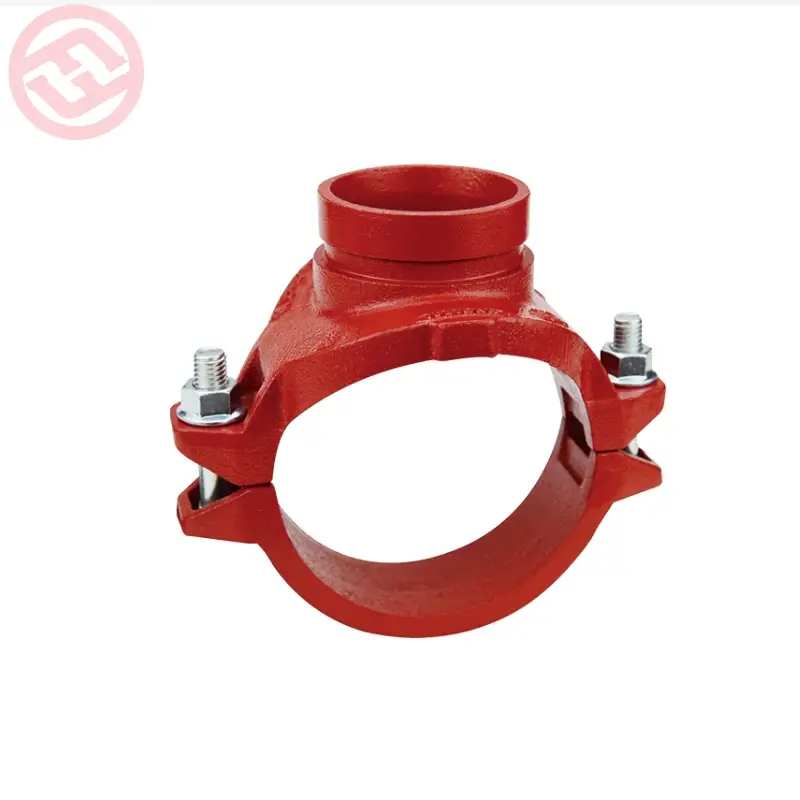Ensuring proper alignment when connecting mechanical tees is crucial to achieving a leak-free and structurally sound joint. Here are some steps to ensure proper alignment:
- Prepare the Pipes: Before connecting the mechanical tee, ensure that the ends of the pipes are cut square and free from burrs or debris. Use a pipe reamer or deburring tool to clean the edges.
- Check Alignment: Align the mechanical tee with the pipes to verify that they are properly positioned. Ensure that the tee is centered on the pipe and that the alignment is straight.
- Use Alignment Guides: Some mechanical tees come with alignment guides or marks to assist in proper alignment. Use these guides to ensure that the tee is positioned correctly on the pipe.
- Clamp or Secure the Pipes: Use clamps or other securing mechanisms to hold the pipes and the mechanical tee in place during assembly. This helps prevent movement and ensures that the alignment remains consistent during the connection process.
- Follow Manufacturer’s Instructions: Refer to the manufacturer’s instructions or guidelines for the specific mechanical tee being used. Manufacturers often provide detailed instructions for proper alignment and installation, including recommended procedures and techniques.
- Use Spacers or Shims: If necessary, use spacers or shims to adjust the alignment of the pipes and the mechanical tee. mechanical tees These can help fine-tune the alignment to ensure a proper fit.
- Tighten Bolts or Fasteners Gradually: If the mechanical tee requires bolts or fasteners to secure it to the pipes, tighten them gradually and evenly. Avoid over-tightening, as this can distort the tee or cause misalignment.
- Inspect Alignment: Once the mechanical tee is installed, visually inspect the alignment to ensure that it is straight and properly positioned. Check for any gaps or misalignments that could compromise the integrity of the joint.
- Perform Leak Test: After installation, perform a leak test to verify the integrity of the joint. Pressurize the system and check for any signs of leakage around the connection points.
By following these steps, you can ensure proper alignment when connecting mechanical tees, resulting in a secure and reliable joint for your piping system.
How do you inspect grooved mechanical tee for defects?
Inspecting a grooved mechanical tee for defects is crucial to ensuring the integrity and reliability of the piping system. Here’s how you can inspect a grooved mechanical tee:
- Visual Inspection: Begin by visually examining the entire surface of the grooved mechanical tee. Look for any signs of damage, such as cracks, dents, corrosion, or manufacturing defects. Pay close attention to the grooves, sealing surfaces, and connection points.
- Check Grooves: Inspect the grooves on the mechanical tee for any signs of wear, deformation, or irregularities. Ensure that the grooves are clean and free from any obstructions or debris that could interfere with the sealing gasket.
- Verify Dimensions: Measure the dimensions of the grooved mechanical tee using appropriate tools, such as calipers or micrometers. Check the outer diameter, inner diameter, depth of the grooves, and other critical dimensions to ensure they meet the specified requirements.
- Inspect Sealing Surfaces: Examine the sealing surfaces of the mechanical tee, including the gasket seating area and the groove edges. Ensure that the surfaces are smooth, flat, and free from any defects that could affect the sealing performance.
- Check for Leaks: Perform a pressure test on the piping system to verify the integrity of the grooved mechanical tee. Pressurize the system to the recommended operating pressure and check for any signs of leakage around the tee and its connections.
- Verify Alignment: Check the alignment of the grooved mechanical tee with the adjacent pipes and fittings. grooved mechanical tee Ensure that the tee is properly aligned and seated in the grooves of the pipes to prevent any misalignment or leaks.
- Inspect Coating: If the mechanical tee has a protective coating or finish, inspect it for any signs of damage or deterioration. Ensure that the coating is intact and provides adequate protection against corrosion and other environmental factors.
- Review Manufacturer’s Documentation: Refer to the manufacturer’s documentation, specifications, and guidelines for the grooved mechanical tee. Follow any recommended inspection procedures or criteria provided by the manufacturer.
- Document Findings: Record your inspection findings, including any defects or discrepancies identified during the inspection. Documenting the inspection results can help track the condition of the mechanical tee over time and facilitate maintenance or replacement as needed.
By conducting a thorough inspection of the grooved mechanical tee, you can identify any defects or issues early on and take appropriate corrective actions to ensure the reliability and safety of the piping system.
